ASUS MS238H Review - Slim and Affordable
by Brian Klug on December 24, 2010 1:47 AM ESTFirst Impressions
Let's start with initial setup. ASUS provides some classy packaging for the MS238H which carries labeling and a photo of the display on the front. It's interesting how everyone does different things with packaging for displays - some include lots of adornments, others like Dell just pack the display in a plain grey box.
In the box also are the usual quick start and warranty papers, D-Sub cable, external power supply (the MS238H doesn't have an internal power supply), and a DVI to HDMI cable.
The first thing that struck me about the display was that the material is a dark blue color with metallic flecks suspended inside. In the harsh, intense fluorescent white light inside the lightbox, it seems overpowering. On the desk or in an average lit office, the material looks a much more understated uniform black color.
On the back you get HDMI, D-SUB (VGA), DC-in, and 3.5mm ports. They're all clustered in the same general area on the bottom right, along with a Kensington lock port.
Where things get interesting is how the MS238H stands upright. There's a circular plastic piece which screws into the rear of the display, onto which clips another clear plastic piece. The ring connects to the display with a screw, and swivels around while the clear piece sits coplanar with the table.
Pushing on the display thus lets you tilt it back and forth, but only by about 10 degrees - it's a pretty limited range of motion, but surprisingly sufficient.
Attaching the ring to the display is initially a bit confusing just because it isn't something I've seen before. There's a plastic guard on the display which covers the mounting point. Before you can install the ring, the plastic cover must be removed, which basically involves prying it off out of plastic snaps. I was sure I was going to break something going at it this way, but that's the way it's done. Next you have to clip the white brace on the ring and get it squared off, but that isn't a challenge.
The tradeoff for such a simple mount is that you lose height adjustment, swivel, and get no VESA mount, but the upshot is that there's really only one piece to transport around. I did notice that the display can creep backwards and tilt into its home position, but only on extremely smooth surfaces.
It would've been nice to see some rubberized material on the bottom of that clear plastic clip which actually contacts the surface the display rests on, because it did slide over time into the most reclined position on all my glass desks.
The front of the MS238H isn't too surprising - there are 5 capacitive OSD control buttons and a capacitive power button off to the right. At far left is ASUS branding, above it is an HDMI logo. The display ships with lots of feature stickers that are easily removed, not the paper kind which leaves a huge mess. The OSD capacitive buttons lack no other markings to belie their presence but white dots. However, touching the buttons illuminates the button and reveals its purpose. The only indicator that's always on is the power symbol in its capacitive depression.
The display panel on the MS238H is matte (thankfully), however the plastic all over the monitor is a high gloss sheen. It seems like a strange choice to forego the increasingly-obligatory glossy panel but slap a glossy plastic surface on the bezel and backside. The result is that dust which bothered me most often wasn't on the surface of the display itself but rather the surrounding plastic, especially on the front bezel which shows it all the time. It's also easy to see fingerprints after you've used the OSD buttons under the right illumination. Honestly the bezel and backside seem to love static charge and attract dust unless you wipe with the right type of cloth - speaking of which, why don't LCD displays come with micro fiber cloths?
In spite of that however, the MS238H's industrial design is definitely striking and on the attractive side of the spectrum. The metallic appearance isn't tacky or gauche, and the display itself is certainly one of the thinnest and requires little surrounding surface area.



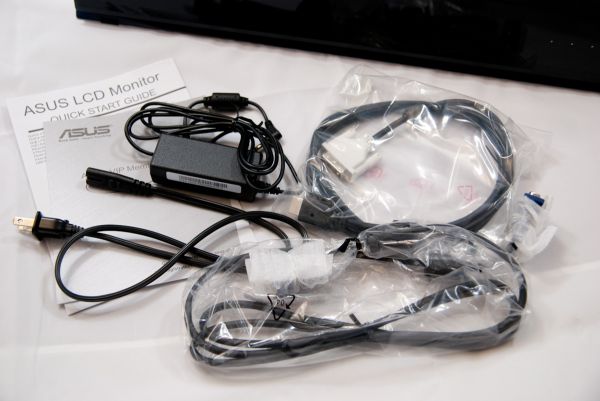
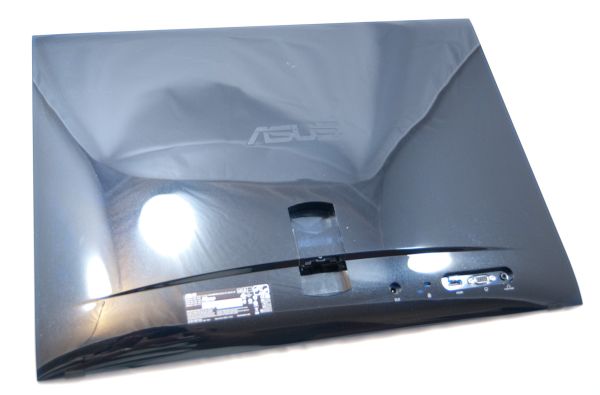
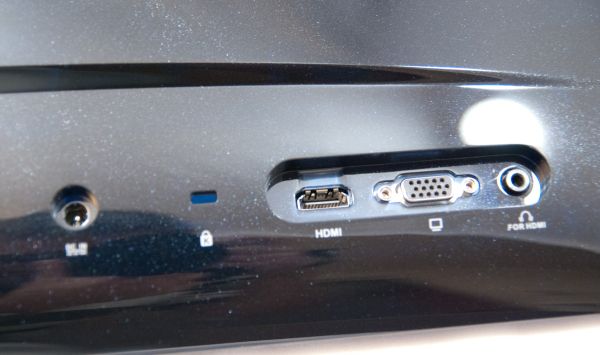
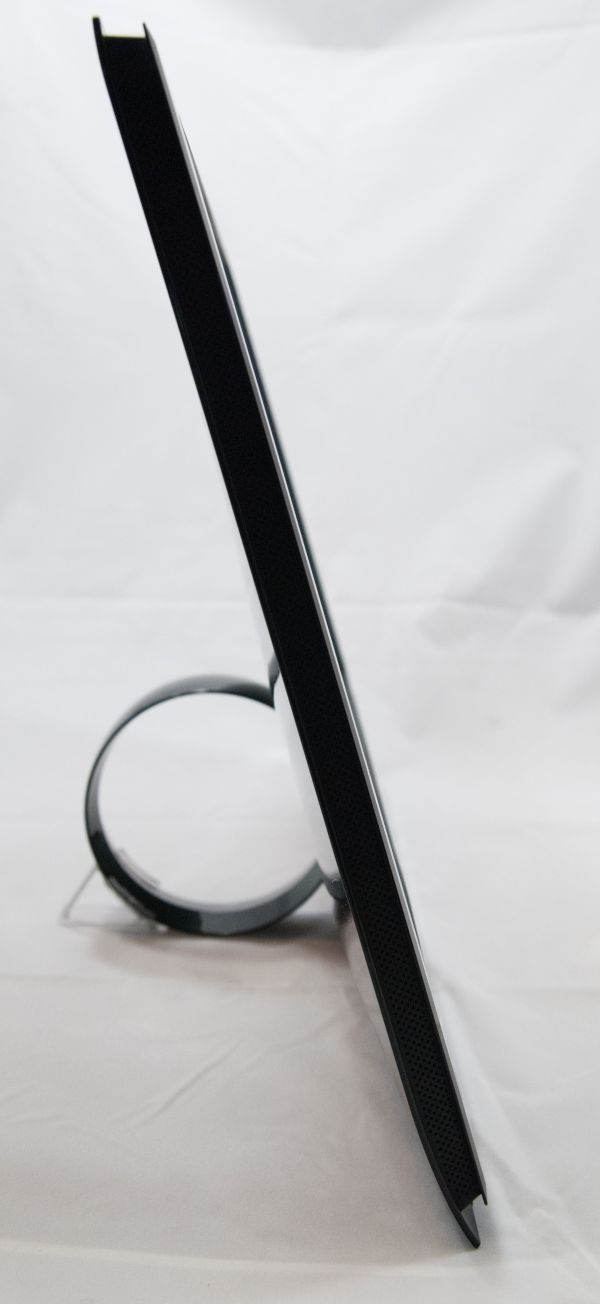
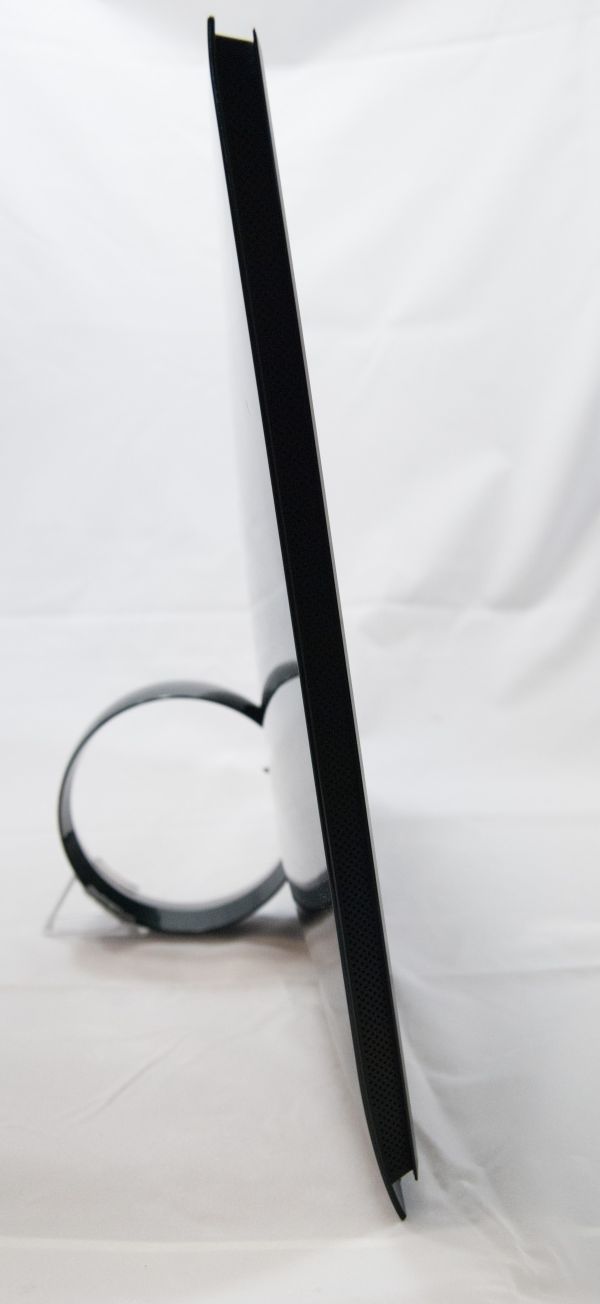
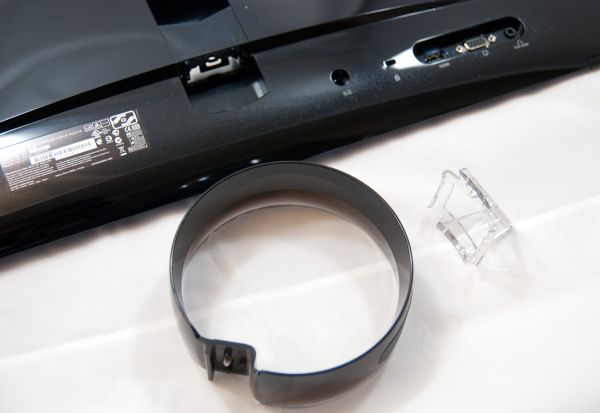
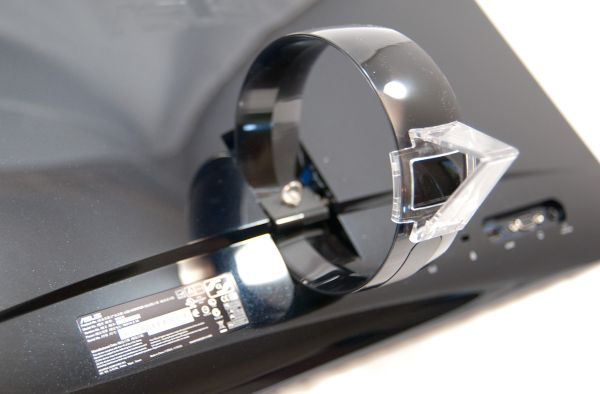
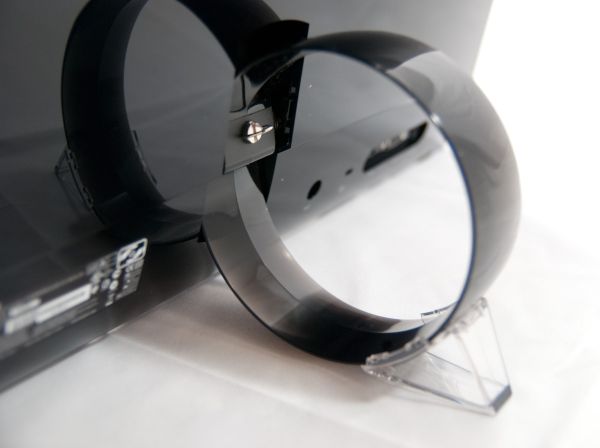
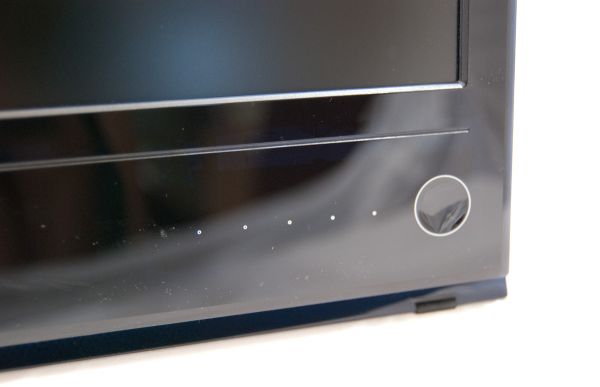

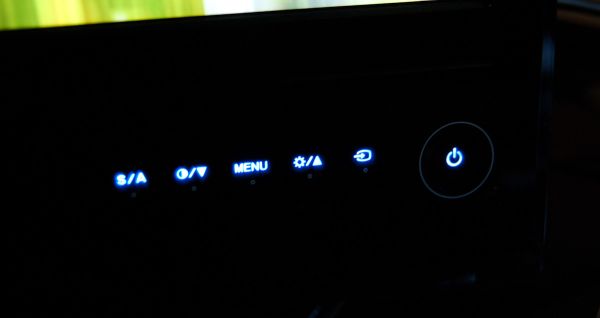
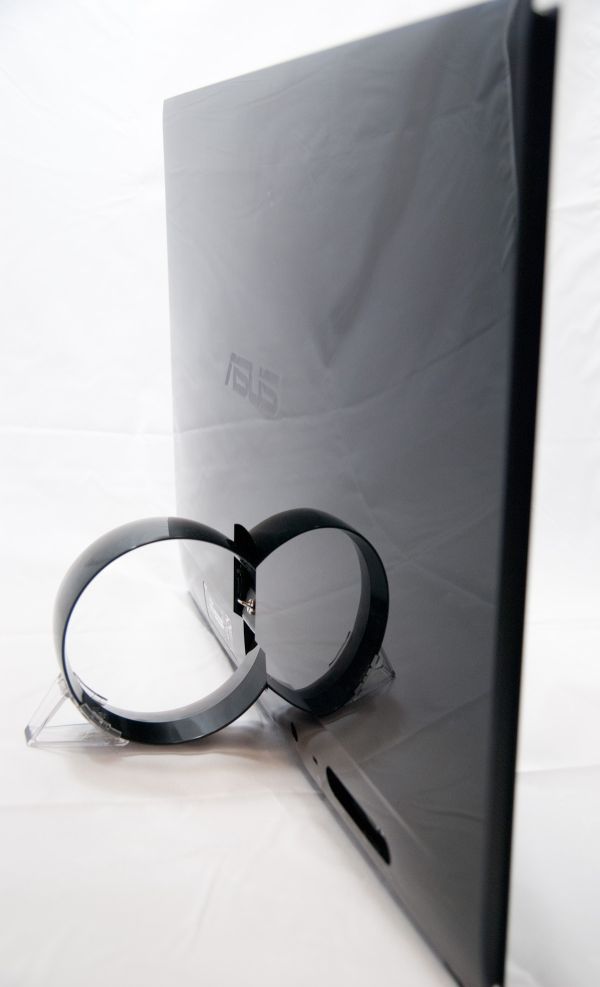








38 Comments
View All Comments
CharonPDX - Friday, December 24, 2010 - link
Is this what you are looking for?http://www.amazon.com/Male-3-5mm-Stereo-Female-Y-C...
Brian Klug - Saturday, December 25, 2010 - link
Wow, this is actually exactly what I've always wanted. I've got a million RCA->female 3.5mm stereo jacks with female-female connectors on them for when I use my consoles with my FP241W displays. This is awesome! Our commenters rock! Thanks!-Brian
jmunjr - Friday, December 24, 2010 - link
16:9 is absolutely absurd for a computer monitor... I don't know where this trend came from but my guess is the LCD makers realized they could make more profits this way and did some nifty marketing to dupe the morons in the world into thinking it was actually a better format for computing...In protest I have modified a dozen or so of my popular websites by reducing their widths to require even more vertical space.
bhopfner - Friday, December 24, 2010 - link
It's totally true! A widescreen monitor is 20% smaller than the same monitor at 4:3. So of course the LCD industry went with that format. They must save millions. Sure a movie looks great and some games take advantage of the format but for general computing it doesn't help. I want my 20% extra screen real estate!sprockkets - Friday, December 24, 2010 - link
This is dumb. My web browser fits just fine here, and compared to my old 1280x1024 monitor resolution on a 17" monitor, it isn't losing any pixels.This is just another stupid made up issue.
How about I can't use my cable box with a 1920x1200 box without some distortion happening without correction? Ever thought about why they went to 1920x1080? Really missed those 80 pixels on a 1280x800 vs. 1280x720 either?
dertechie - Friday, December 24, 2010 - link
If a 23" monitor barely gains vertically on a 17" monitor, that's not a good thing.You can't use your cable box with a 1920x1200. That's an indictment of the cable box or a monitor designer that neglected to include a 1:1 or preserve aspect ratio mode, not an indictment of the aspect ratio.
We have thought about why they went to 16:9. They can get 11% more panels from a sheet of mother glass (and that's not even counting being able to find more efficient ways to cut it, it may be more). HDTV popularized it, they sell better, and economy of scale compounds that. I actually like seeing 1080p on screens below 24", it's a step forward there.
For media, 1080p is great. Where I don't like 1080p is when I see it in the areas I used to see 1920x1200. 24"-28" monitors used to be mainly 1920x1200. Now, they're mainly 1080p and you have to actually look to find a 16:10 one. It feels like we've regressed instead of going forward. For those of us doing vertically oriented work (like programming), those 120 pixels actually do matter. Nice monitors let you turn the screen, but cheap monitors (and especially cheap TN monitors) don't allow that.
Fritzr - Monday, December 27, 2010 - link
Your cable box should work just fine with a 1920x1200 display. You should see a black band above and below the TV picture though. What you cannot do on a 1920x1080 display is use 1920x1200 wallpaper (a standard size) without distorting it with the 'stretch to fit' display setting.Those blsck bands are NOT a failure of your cable box. It is called letterboxing. The black bands represent the unused portion of the display. If you watch SD broadcasts without reformatting, you will see the same banding on the sides as the picture is not wide enough to fill the screen.
Many HD TVs have an automatic adjustment that stretches the picture to fit the screen. This results in distorted video when viewing 16:9 content on a 4:3 screen and vice versa.
Personally I will accept the penalty imposed by a 16:10 aspect ratio where I am forced to see more of the web page than an HDTV can display.
I would like to get one of the higher resolution screens also. You should avoid those like the plague though...A 3840x2400 cinema class monitor would display your TV screen as a tiny box in the center of the display ... at least until you enable 'stretch to fit display' anywho.
Really scary though is the next generation UltraHiDef TV standard that has been demonstrated in Japan 7680x4320 (16:9) and tbe WHUXGA monitor standard at 7680x4800 (16:10) Those would be nice for big screen displays :)
MobiusStrip - Saturday, January 1, 2011 - link
You won't see this in the U.S. Our asinine "advanced" TV "standard" still allows interlacing and a non-integer frame rate, caps the bitrate at 19 megabits per second, and did not require sets to have updatable firmware. Nor does it define what "HD" means. How many ways can you fail?Then again, we're talking about the successor to the governing body that came up with 29.97 FPS in the first place.
mike8675309 - Thursday, December 30, 2010 - link
People just don't get it, and it is a flaw due to the shift in technology from analog monitors to digital monitors. Their expectations are just so much lower because the common use case simply doesn't demand the vertical resolution.Back in the day where dot pitch and image masks everyone understood what was better, and what was worse. These days they see 24" vs 17" and assume it's better, when in fact it can often be worse and at best, only minimally better.
Sure, movies work at these low vertical resolutions. So do web pages, for the most part. But for software developers and many other technology professionals these low vertical resolutions completely bite and are a tremendous step backward from the reasonably priced performance levels achievable with CRT's in the early 90's.
Sepidoel - Friday, December 24, 2010 - link
Very unfortunate, in my country it's sold way pricier than Amazon (about 340 USD). In regards of 23" LCD, perhaps you may compare it with AOC iF23 - an IPS LED LCD with very affordable price (about 270 USD in my place). I bought one for my sister and I say this is great monitor for the price. I'd like to write an article for Anandtech, but I just simply don't know how to bring up the benchmark numbers.Amazon URL for the 22" one: http://www.amazon.com/22IN-LCD-1920X1080-30000-Pia...